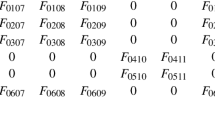Summary
Changes in the number, shape, volume, orientation and vacuolization of cells involved in the budding of hydra were measured in histological sections. Before evagination, a group of about 800 epithelial cells are visibly recruited for the bud to be produced and this number increases to about 5,000 within a day. Thereafter, bud size increases mainly by proliferation of the cells within the bud. Upon recruitment for budding, the epithelial cells assume a columnar shape, with a smaller contact area facing the mesoglea, accompanied by a decrease in volume which is mostly accounted for by devacuolization. In later stages, cells progressively resume the form typical for non-budding areas of hydra. Evagination proceeds without reorientation of epithelio-muscular fibers, whereas elongation of the bud is accompanied by fiber reorientation.
The process of sorting out and regeneration in aggregates of previously dissociated hydra cells was followed using various ratios of endodermal to ectodermal epithelial cells. From different initial compositions, the ratio in the regenerate rapidly approaches 1∶1, the ratio found in normal hydra tissue.
The experimental findings are discussed in the context of theoretical notions on pattern formation, evagination, elongation and stability of layered structures.
Similar content being viewed by others
References
Benthin MG, Davis LE (1976) The qualitative use of Cason's one-step triple stain on Hydra. Cytologie 41:741–748
Bode H, Berking S, David CN, Gierer A, Schaller H, Trenkner E (1973) Quantitative analysis of cell types during growth and morphogenesis in hydra. Wilhelm Roux' Arch Entwicklungsmech Org 171:269–285
Campbell RD (1967a) Tissue dynamics of steady-state growth inHydra littoralis. I. Patterns of cell division. Dev Biol 15:487–502
Campbell RD (1967b) Tissue dynamics of steady state growth inHydra littoralis. J Morphol 121:19–28
Clarkson S, Wolpert, L (1967) Bud morphogenesis in hydra. Nature (London) 214:780–783
David CN (1972) Quantitative method for maceration of hydra tissue. Wilhelm Roux' Arch Entwicklungsmech Org 171:259–268
David CN, Campbell RD (1972) Cell cycle kinetics and development of Hydra attenuata. I Epithelial cells. J Cell Sci 11:557–568
Fristrom D (1976) The mechanism of evagination of imaginal discs ofDrosophila melanogaster. III. Evidence for cell rearrangement. Dev Biol 54:163–171
Gelei J von (1925) Über die Sprossbildung bei Hydra grisea. Archiv Entwicklungsmech Org 105:633–645
Gierer A (1977) Physical aspects of tissue evagination and biological form. Q Rev Biophys 10(4):529–593
Gierer A, Berking S, Bode H, David CN, Flick K, Hansmann G, Schaller H, Trenkner E (1972) Regeneration of hydra from reaggregated cells. Nature New Biol 239:98–101
Gierer A, Meinhardt H (1972) A theory of biological pattern formation. Kybernetik 12:30–39
Klimek F (1979) Doctoral thesis, Eberhard-Karl-Universität, Tübingen, FRG
Klimek F, Graf L, Hansmann G, Gierer A (1980) Cell interaction, form and orientation in regenerating and budding Hydra. Proceedings of the 4th Intern. Coelenterate Conference. Elsevier North-Holland Biomedical Press, Amsterdam
Loomis WF, Lenhoff WM (1956) Growth and sexual differentiation of hydra in mass culture. J Exp Zool 132:555–573
Meinhardt H, Gierer A (1974) Applications of a theory of pattern formation based on lateral inhibition. J Cell Sci 15:321–346
Mueller JF (1950) Some observations on the structure of hydra with particular reference to the muscular system. Trans Am Microsc Soc 69:133–197
Otto JJ (1976) Orientation and behaviour of epithelial cell muscle processes during Hydra budding. J Exp Zool 202:307–322
Otto JJ, Campbell RD (1976) Budding inHydra attenuata: bud stages and fate map. J Exp Zool 200:417–428
Shostak D (1968) Growth inHydra viridis. J Exp Zool 169:431–446
Steinberg MS (1963) Reconstruction of tissues by dissociated cells. Science NY 141:401–408
Webster G, Hamilton S (1972) Budding in hydra: the role of cell multiplication and cell movement in bud initiation. J Embryol Exp Morphol 27(2):301–316
Author information
Authors and Affiliations
Rights and permissions
About this article
Cite this article
Graf, L., Gierer, A. Size, shape and orientation of cells in budding hydra and regulation of regeneration in cell aggregates. Wilhelm Roux' Archiv 188, 141–151 (1980). https://doi.org/10.1007/BF00848806
Received:
Accepted:
Issue Date:
DOI: https://doi.org/10.1007/BF00848806




